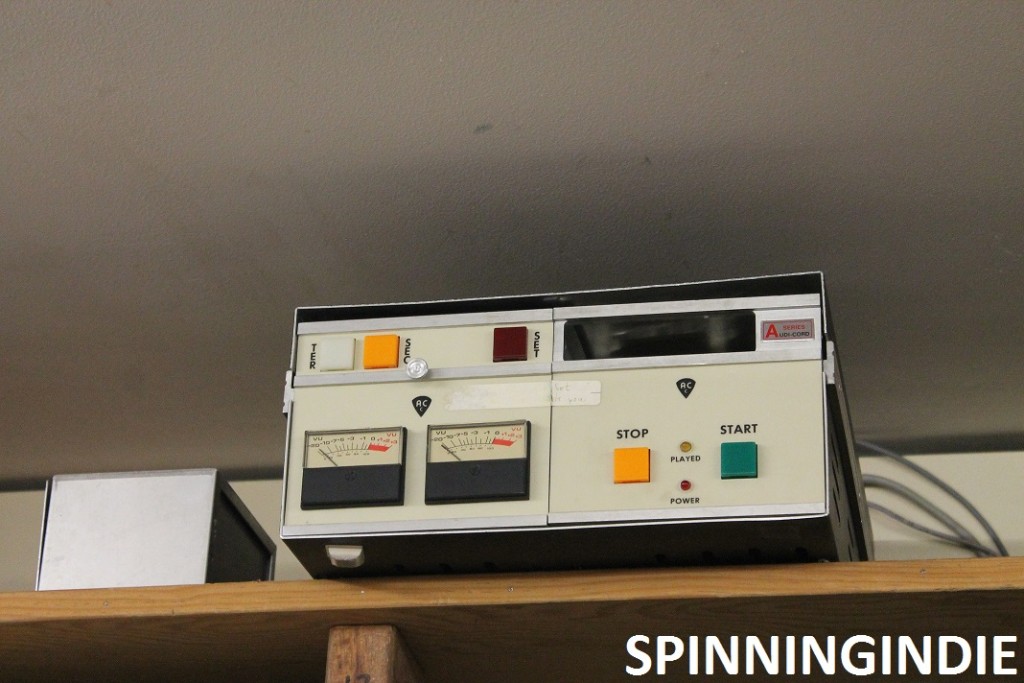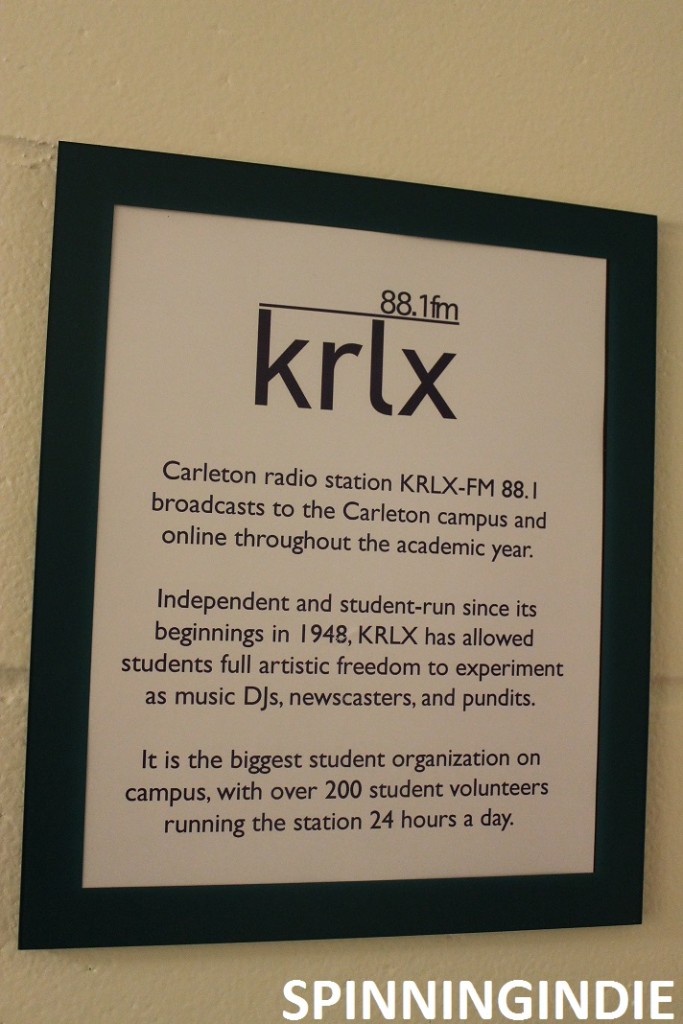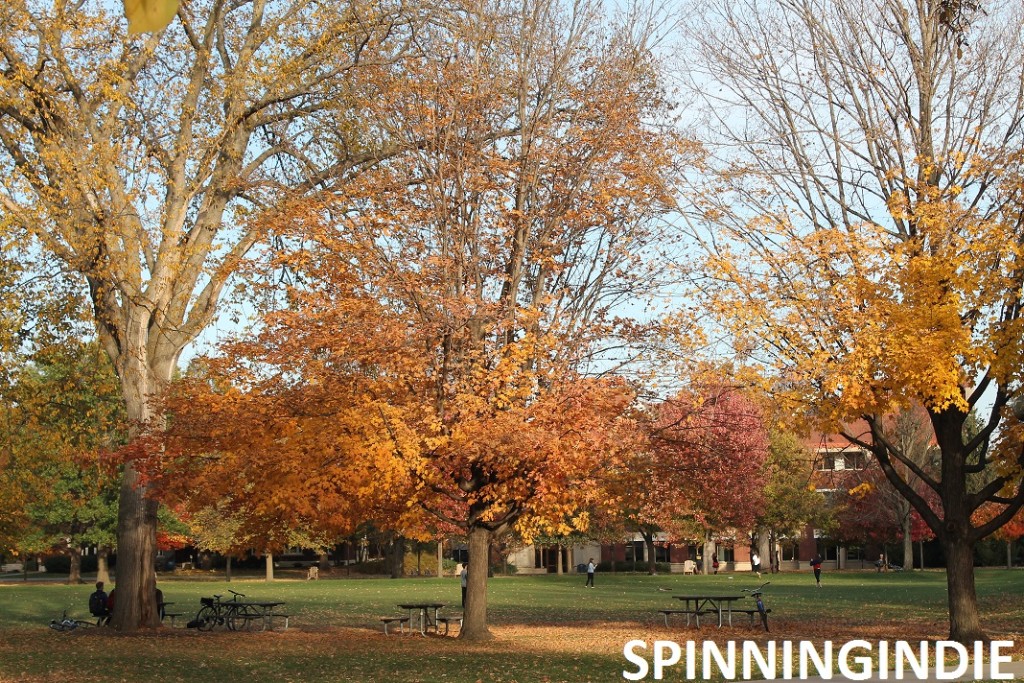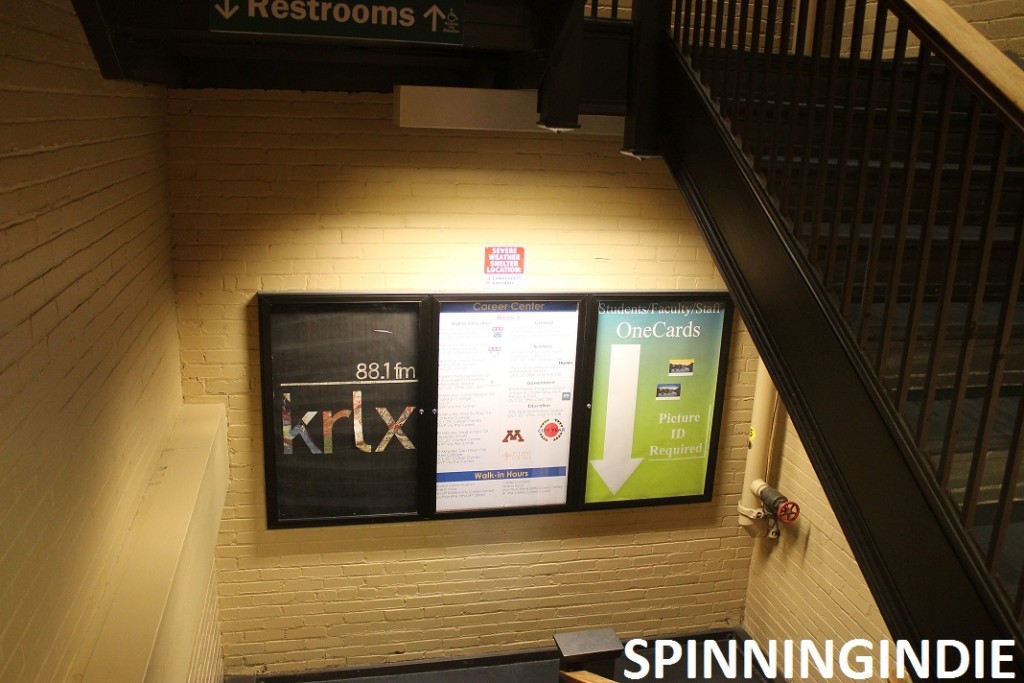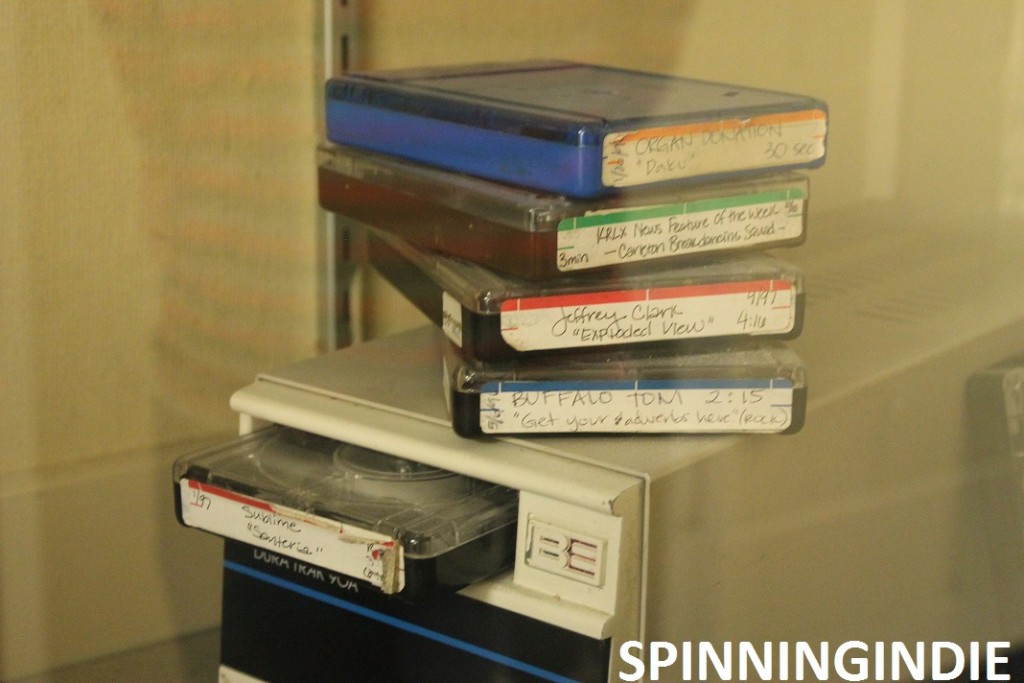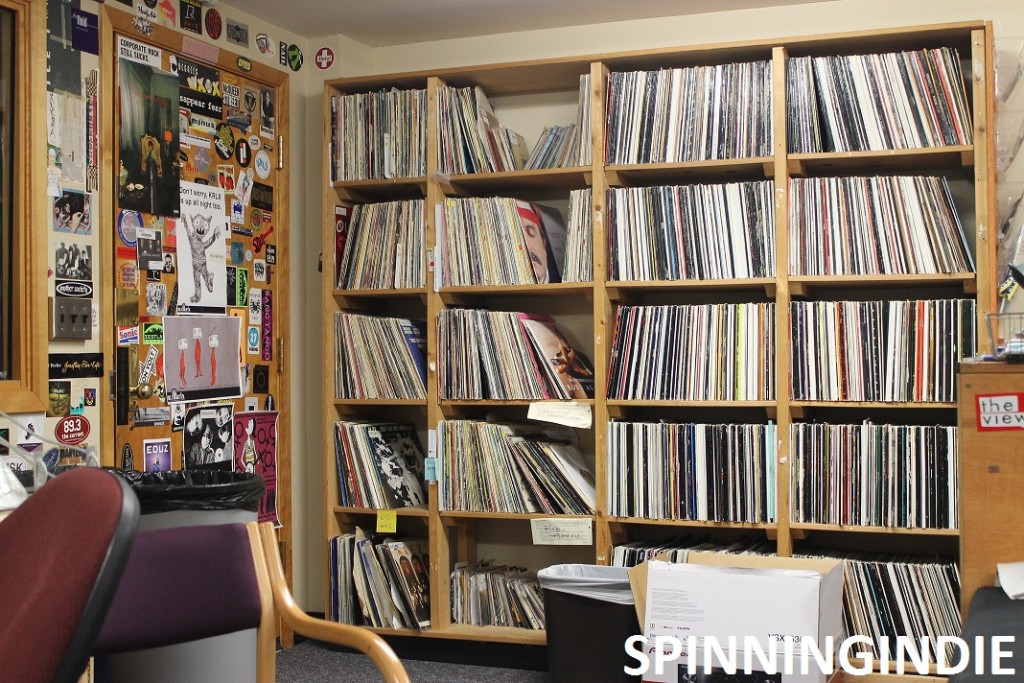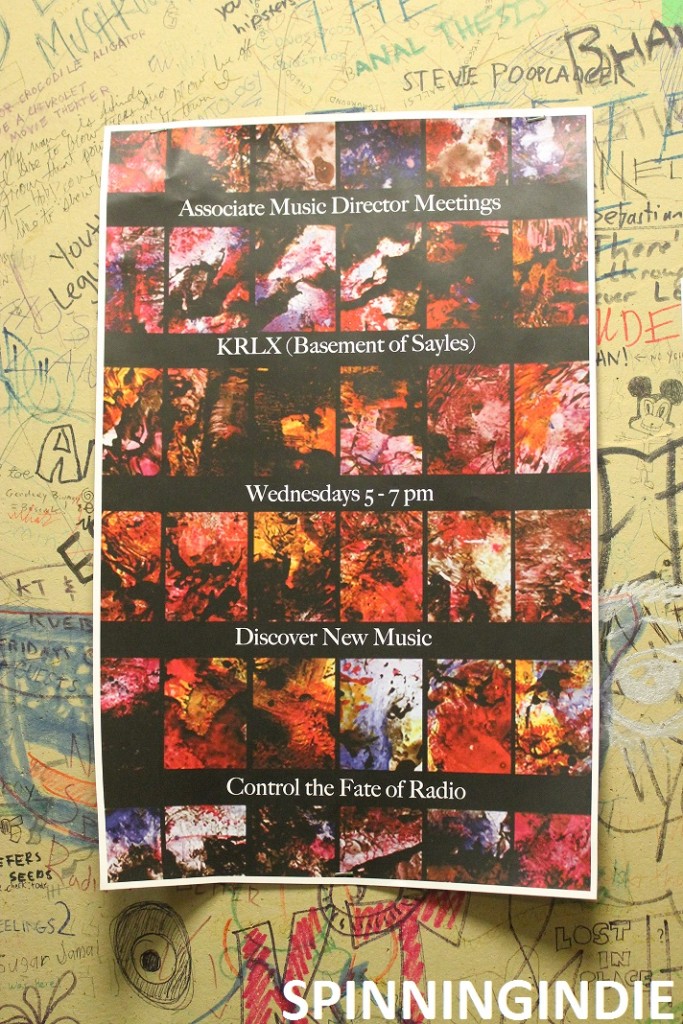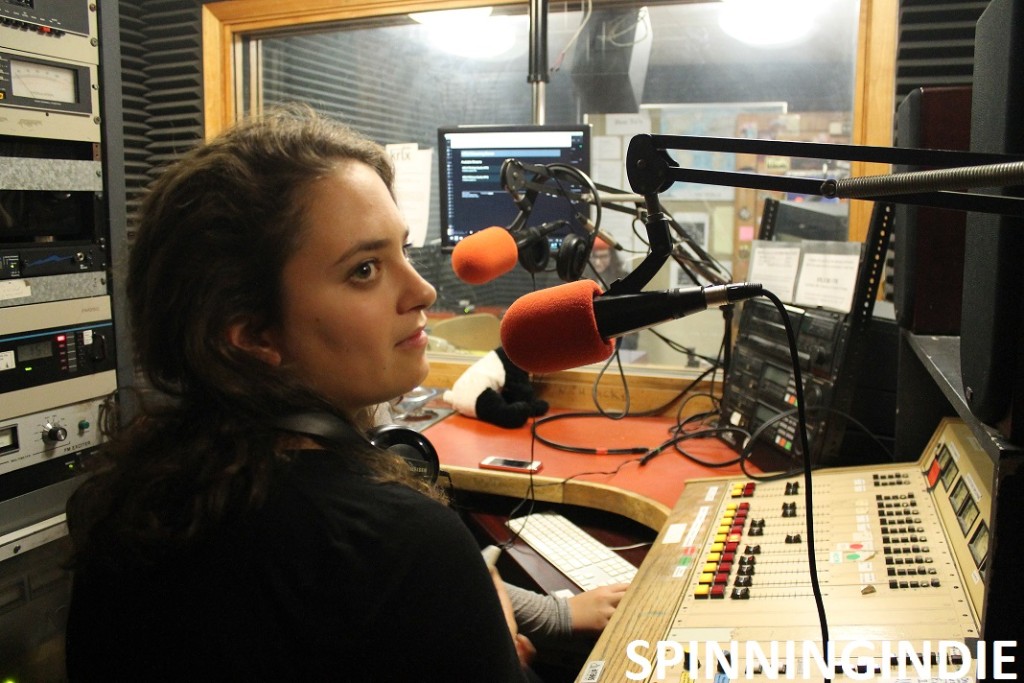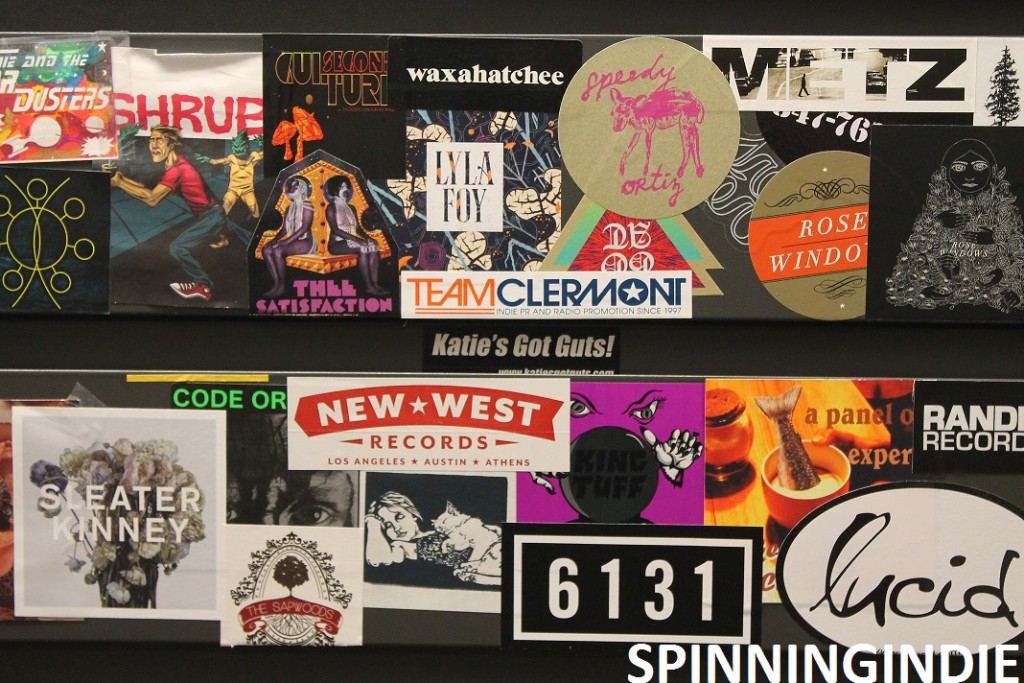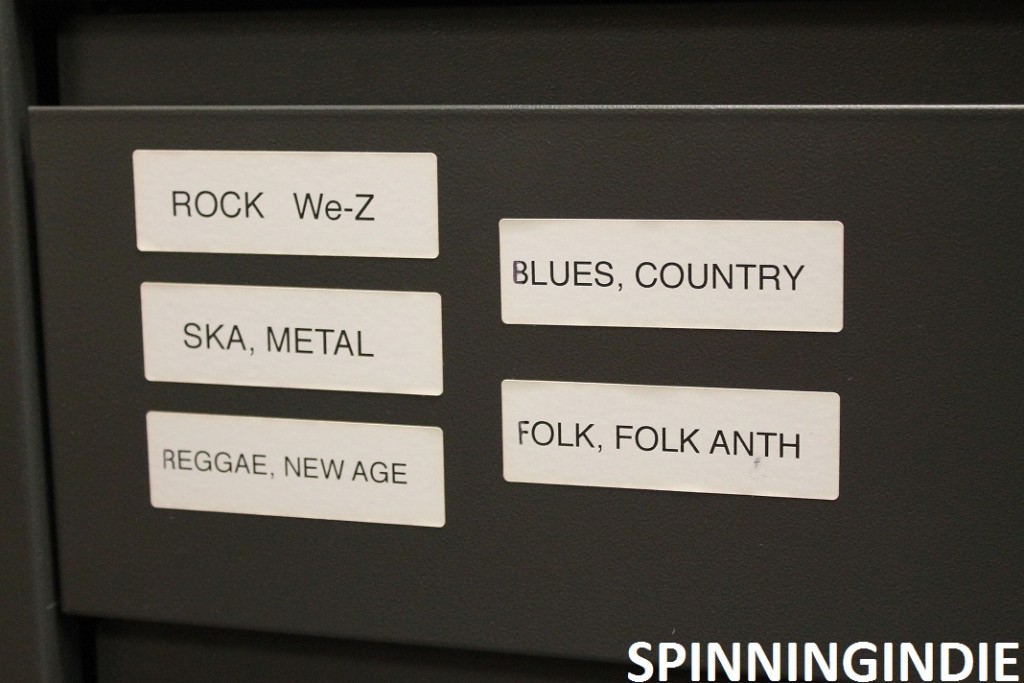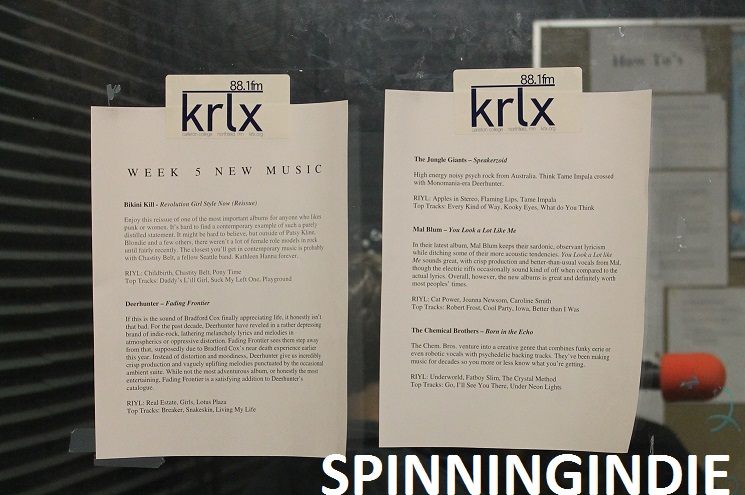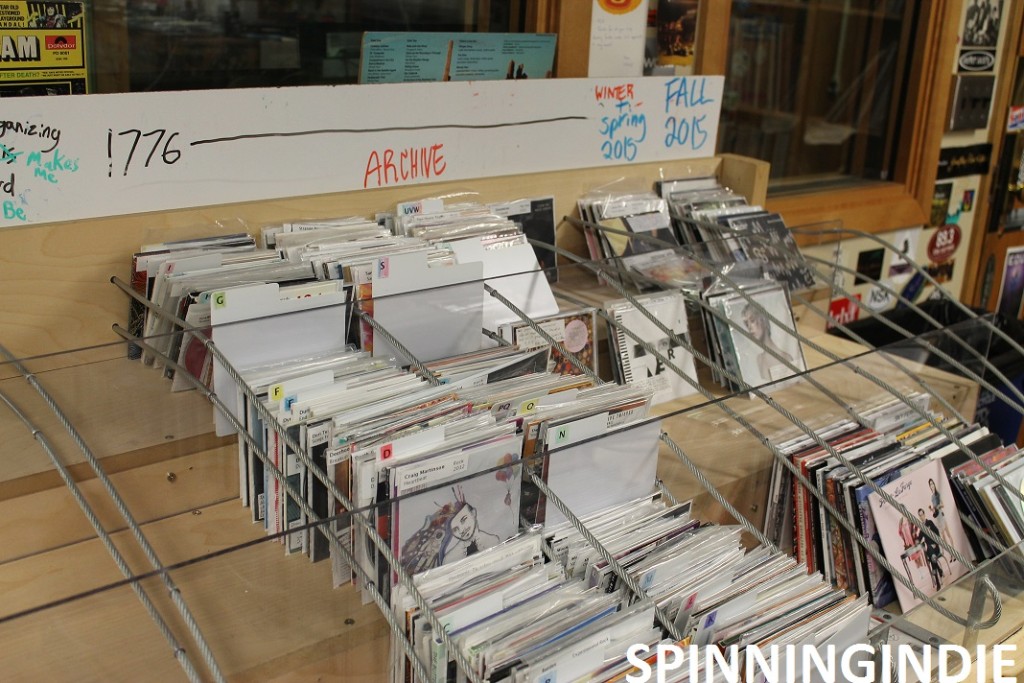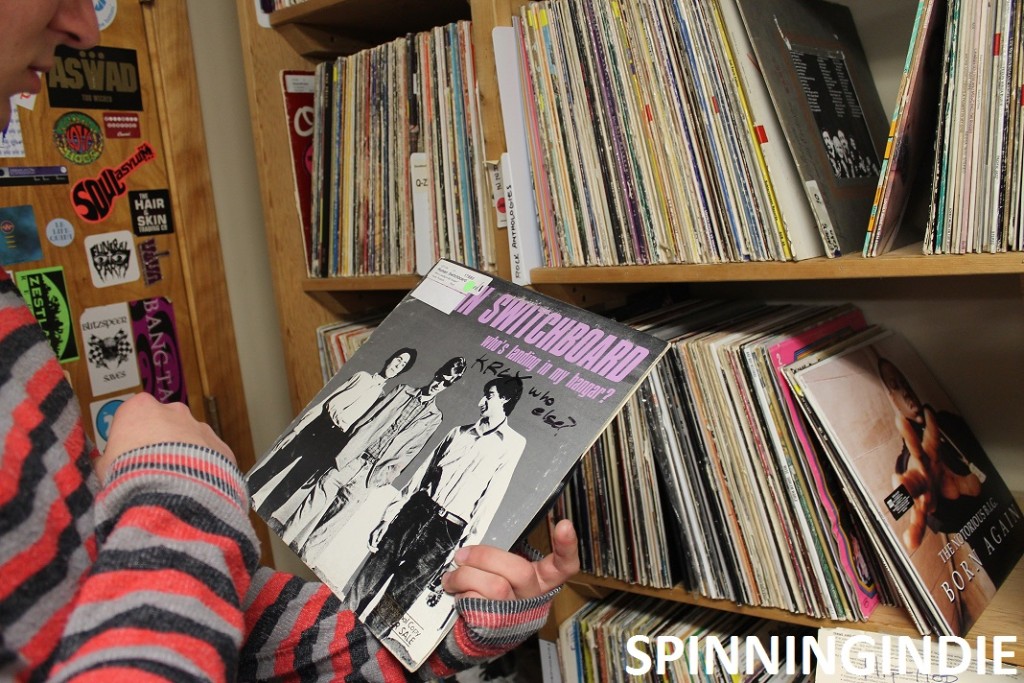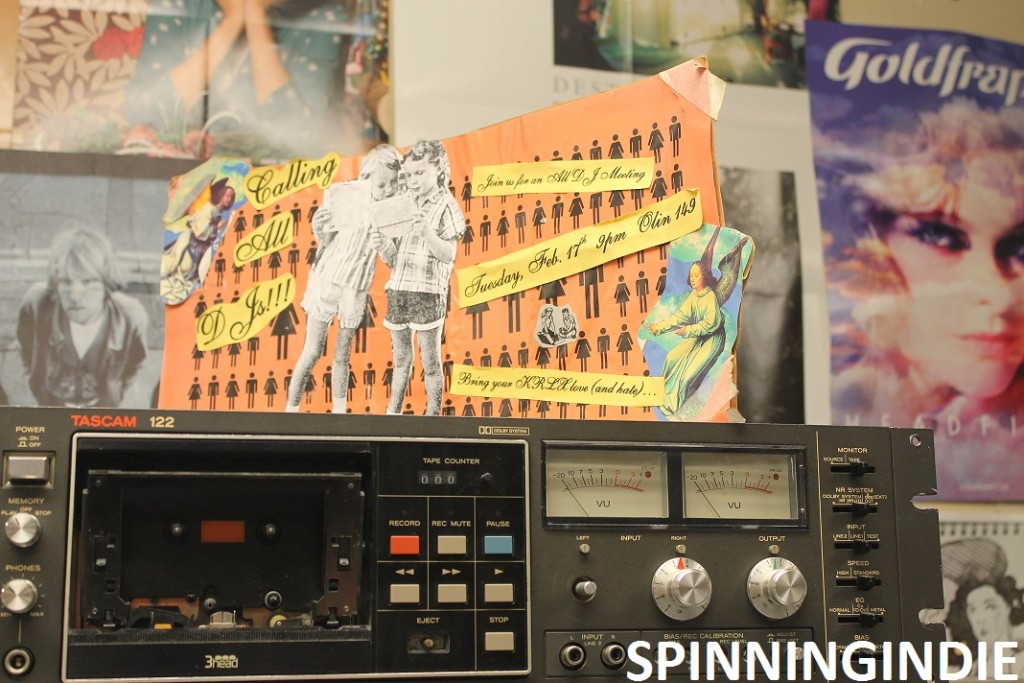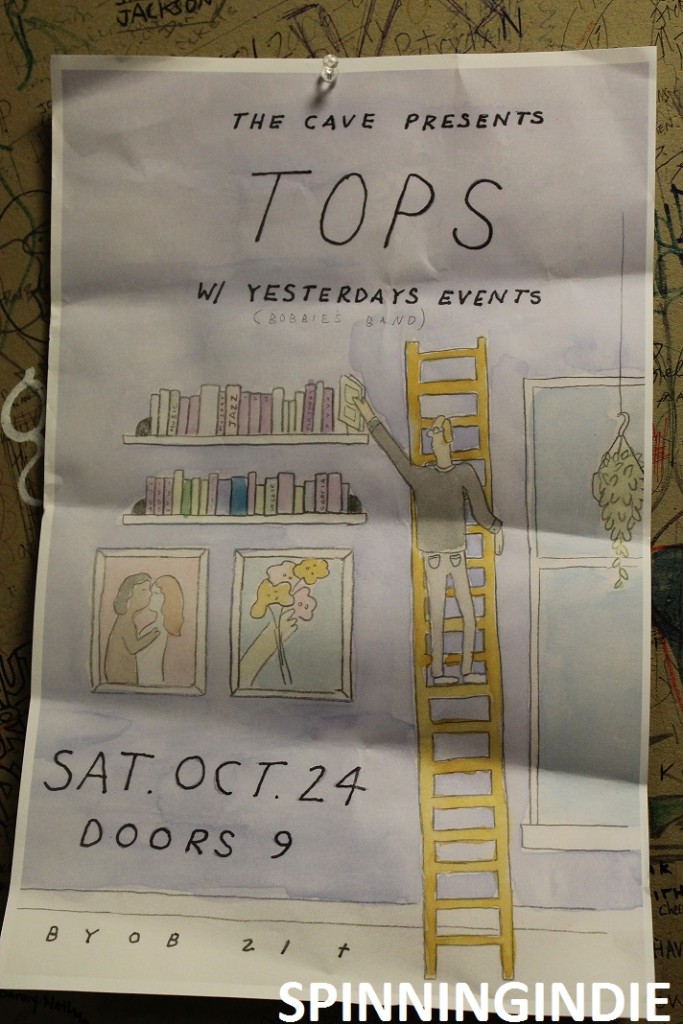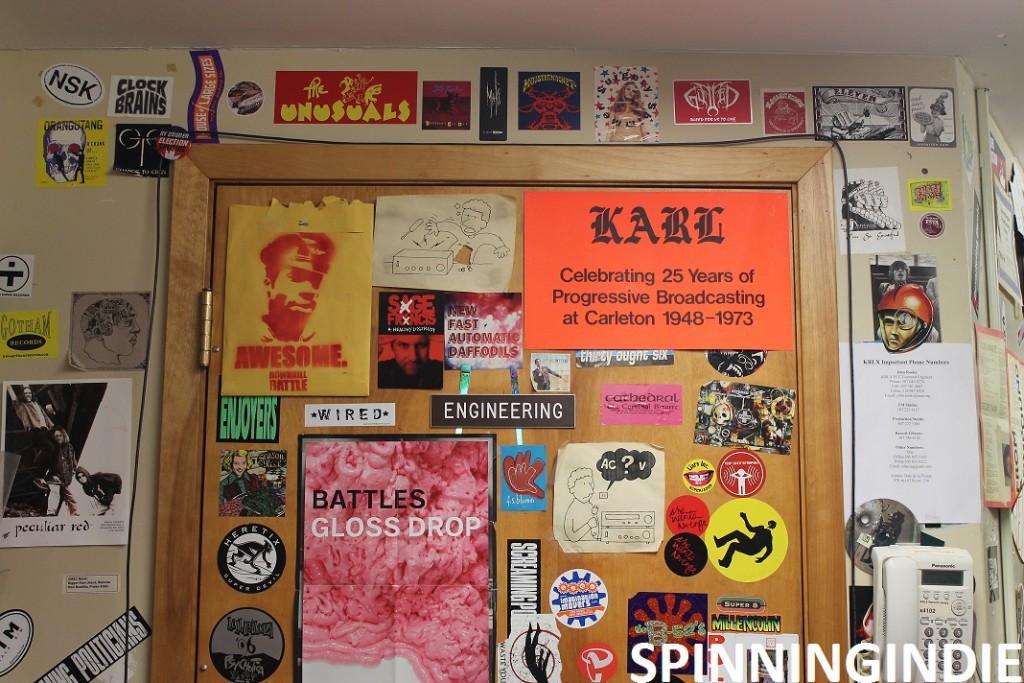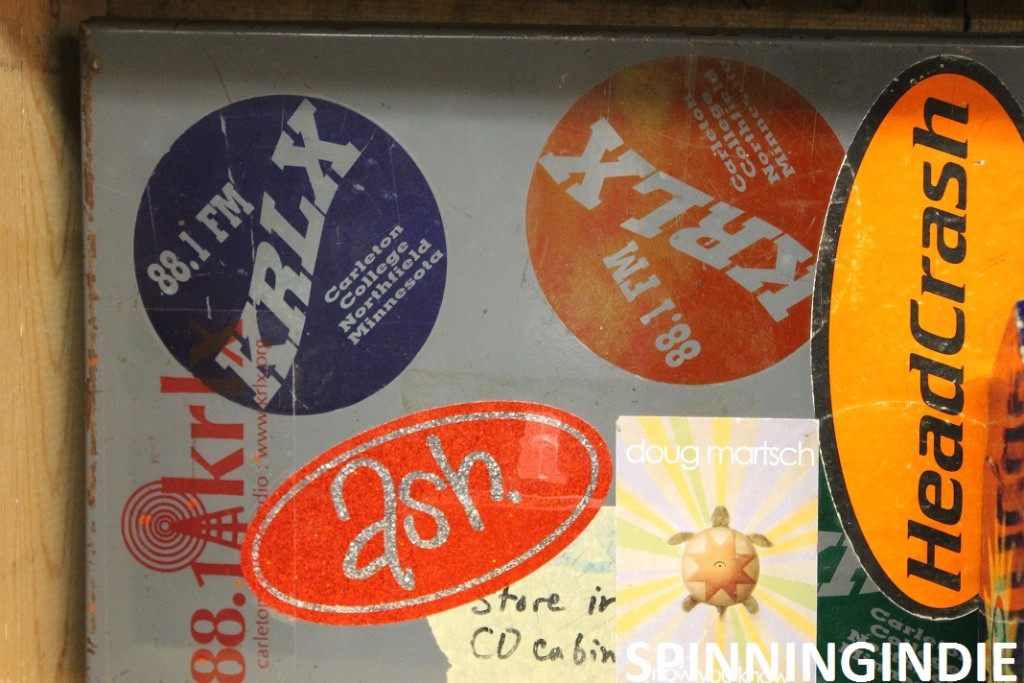When I journeyed to Minneapolis for the College Broadcasters Inc. (CBI) convention last month, I was able to visit three college radio stations and Carleton College station KRLX-FM was on the top of my list. I’d been aware of the long history of radio at Carleton for quite some time and was eager to see the station. Way back in 2009, I featured KRLX on my Spinning Indie 50 State Tour series, in which I attempted to profile a different college radio station in every state (I petered out after 17 states).
Storied College Radio Past at Carleton College
The first college radio station at Carleton College, KFMX (which apparently stood for “FM experimental”), received its AM license in December, 1923 and launched in January, 1924. Over the years, the station’s frequency was moved around the dial and it became a more challenging operation when it was forced to share the same channel with several other local stations. According to S.E. Frost in Education’s Own Stations: The History of Broadcast Licenses Issued to Educational Institutions, “…constant shifting of the frequency had brought the station into a place where its nighttime broadcasts were interfered with by Station WDSU at New Orleans, Louisiana, so as to make impossible any satisfactory operation after sundown. Further, the hours of daytime operation were so restricted as to limit seriously the station’s actual service to its listeners.”
Several colleges in Minnesota were college radio pioneers and that also added to KFMX’s challenges. Frost writes,
A further source of trouble was the fact that Carleton College, St. Olaf College, and the State University of Minnesota were all assigned to the same channel with the commercial station WRHM, located in Minneapolis. While the educational institutions were able to co-operate with each other amicably, and were anxious to work in the same way with the commercial station, the latter desired to secure exclusive use of the channel. As a result the educational institutions were involved in long and expensive litigation to maintain their position on the air.”
Sadly, Carleton ended up letting the KFMX license expire in 1933, allowing WRHM to time-share the frequency with St. Olaf (WCAL) and the State University of Minnesota (WLB, now KUOM). Students revived radio at Carleton in 1948 with the launch of campus-only carrier current station KARL-AM. By the 1970s, interest in FM was growing, with KRLX-FM launching in 1974 (with the call letters phonetically standing for Carleton, if you interpret the “X” as the roman numeral “10”). KRLX now broadcasts at 88.1 FM.
An Autumnal Visit to College Radio Station KRLX
On the afternoon of Wednesday, October 21, 2015, I made my way to KRLX-FM at Carleton College, which was around a 45 minute drive south from the airport through rural countryside. On the way I passed farms, a pumpkin patch and saw a cluster of roaming white chickens on the side of the road. Located near the quaint town of Northfield, Minnesota, Carleton College has a beautiful campus (accentuated by the colorful fall foliage) that made me feel nostalgic about my own college experience.
I met up with KRLX’s Program Director Eli Ruffer and he walked me to the station’s basement digs in the school’s Sayles-Hill Campus Center, filling me in about the state of KRLX. The station occupies a fairly compact space, with an on-air studio, adjacent production studio, a spacious record library that also serves as sort of a lounge/hang out space with chairs and a couch, and an engineering room (which I did not see).
When I asked Ruffer if he knew much about the station’s history, he told me that he didn’t, but he pointed out a plaque in front of the station entrance as well as a hallway shrine of vintage equipment (including a stack of carts). The station’s walls are also full of stickers and flyers from the past few decades.
I’d been warned in advance that it was mid-terms and that students were pretty busy preparing for exams. When we got to the KRLX record library, it was inhabited by a quiet group of students studying and I felt a bit guilty about looking around, snapping photos, and asking questions while they worked. Ruffer said that he was done with midterms, so he was a bit more relaxed.
Although it was already mid-terms, Ruffer told me that since Carleton is on a quarter system, they’d only been back in school for about a month. The station goes off the air during the summer, resumes in the fall and then comes back with a new schedule every quarter.
Despite going off the air during summer break, KRLX has an impressive 24 hour a day schedule of live DJs during the school year. Unlike many of its college radio counterparts, KRLX does not employ any sort of automation system, instead relying on its large roster of around 180 DJs to fill the programming day (and night).
I asked him how they manage to keep the station staffed 24 hours a day and Ruffer told me that it’s his job to keep the station on-air, explaining that there’s a whole protocol set up for who to call when a DJ doesn’t show up for a shift and there are people on the staff who will come in to cover in the event of a no-show.
I was amazed to hear that on such a small campus (of around 2,000 students), KRLX manages to attract nearly 200 participants. Ruffer said the station is the largest organization at Carleton and that students involved at KRLX (the station is 100% students) have a range of commitments.
As far as the schedule, it’s quite varied, with a variety of programs throughout the week. Ruffer explained that shows aren’t grouped by genre. Shows are pretty short, ranging from half an hour to two hours in length and newer DJs tend to start out on late night shifts between 1am and 7am. Ruffer said that the most desirable shows are during safe harbor from 10pm to 1am (when DJs can play a wider variety of content, including tracks with dirty words). Most DJs are playing digital music and the KRLX Music Director adds material to the station’s digital library regularly. Everyone on the air is expected to play at least one new song every hour.
In addition to the digital library, KRLX has a nice collection of physical music, including CDs and older vinyl records. Ruffer mentioned that he’d seen some gems in the library, including the Beach Boys’ Pet Sounds, a lot of Bob Dylan, and a bunch of classical LPs. As we scanned through the library, I noticed a bunch of 1980s punk classics, a classic Stooges record, and even a Sha Na Na album. There’s also a handy USB turntable in the record library which can be used to convert vinyl to mp3. A bin in the library contains some newer CD releases.
Only station managers, members of the station’s board and KRLX librarians have access to the vinyl library, although other DJs can make a special request if there’s something that they’d like to play. Ruffer guessed that perhaps 10 DJs regularly play vinyl and CDs on their shows. He told me that he’s been playing vinyl almost exclusively “because it’s fun.” Some of the items that have caught his eye have included Mahler symphonies, Philip Glass’ Einstein on the Beach, and older Dr. Dog records. Ruffer said, “I love the record library.” He also recounted that he likes to experiment on the air and has played two songs at once before.
The studio contains two CD players, a cassette deck, and two turntables (although one is missing a needle). There are a few cassettes in the library, but Ruffer said he hasn’t seen people play them.
During my visit, a campus stand up comedy group, “The Queens of Comedy” was doing their show on KRLX, utilizing both the on-air studio and the production studio to accommodate all of the participants. Ruffer pointed out that there’s been a big push to get other campus groups involved at the station. Additionally, the station has a close relationship with The Cave, Carleton’s long-time (since 1927!) student-run venue. KRLX airs a weekly “Live at the Cave” program and is set up to broadcast live from the venue. Events that they’ve aired have included music shows as well as lectures.
As I wrapped up my visit, Ruffer talked a bit about the variety of shows on KRLX, telling me that it ranges from a Christian music and talk show, to country, rap, and classical music shows. He said that despite the variety and the huge number of DJs, it’s still challenging to get people to listen. Most Carleton students who listen tune in to the webstream and most FM listeners are in their cars (although not many Carleton students have cars). Ruffer said that it’s hard to get people to listen to the radio when they have “infinite access to music” and tend to “not stick around” when an unrecognizable song comes on the air. Despite all that, he told me that it’s “super fun to have a show” and a bonus is being able to “listen to music on really good speakers” in the studio.
A short 2014 documentary, KRLX Lives On, provides a nice glimpse of the station and speaks to the ongoing appeal of college radio.
After leaving the station, I tuned in to KRLX on my rental car’s stereo and caught the conclusion of the comedy show. Ruffer (also a member of the group) joined in with the crew and then the program transitioned to the next DJ. I was charmed by some of her vintage selections, including “Please Mr. Postman” (a Carpenters version) and the cheesy “Total Eclipse of the Heart.”
Thanks so much to Eli Ruffer for the great tour of KRLX. This is my 92nd station tour report. Coming up, I have one more tour recap to post from the Minneapolis area, as well as some from Portland (Oregon) and San Francisco. See my most recent field trips on Radio Survivor and see all of my station field trips on Spinning Indie.



